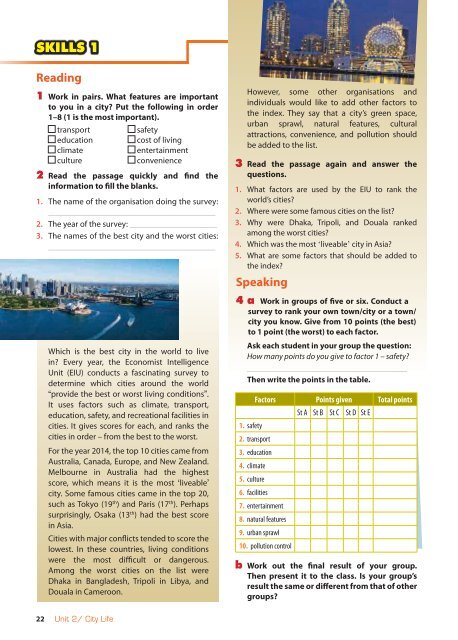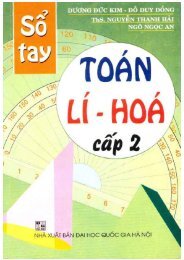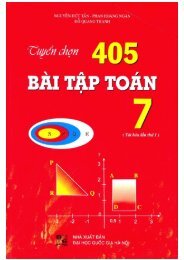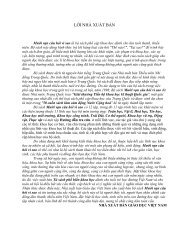Sách giáo viên Tiếng Anh 9 Thí điểm 2 tập (Pilot English 9 for Teacher)
https://app.box.com/s/rnv2yu1duebjhdpkknu2l47p9nmel5ax
https://app.box.com/s/rnv2yu1duebjhdpkknu2l47p9nmel5ax
Create successful ePaper yourself
Turn your PDF publications into a flip-book with our unique Google optimized e-Paper software.
SKILLS 1<br />
Reading<br />
1 Work in pairs. What features are important<br />
to you in a city? Put the following in order<br />
1–8 (1 is the most important).<br />
transport<br />
education<br />
climate<br />
culture<br />
safety<br />
cost of living<br />
entertainment<br />
convenience<br />
2 Read the passage quickly and find the<br />
in<strong>for</strong>mation to fill the blanks.<br />
1. The name of the organisation doing the survey:<br />
______________________________________________<br />
2. The year of the survey: ________________________<br />
3. The names of the best city and the worst cities:<br />
______________________________________________<br />
Which is the best city in the world to live<br />
in? Every year, the Economist Intelligence<br />
Unit (EIU) conducts a fascinating survey to<br />
determine which cities around the world<br />
“provide the best or worst living conditions”.<br />
It uses factors such as climate, transport,<br />
education, safety, and recreational facilities in<br />
cities. It gives scores <strong>for</strong> each, and ranks the<br />
cities in order – from the best to the worst.<br />
For the year 2014, the top 10 cities came from<br />
Australia, Canada, Europe, and New Zealand.<br />
Melbourne in Australia had the highest<br />
score, which means it is the most ‘liveable’<br />
city. Some famous cities came in the top 20,<br />
such as Tokyo (19 th ) and Paris (17 th ). Perhaps<br />
surprisingly, Osaka (13 th ) had the best score<br />
in Asia.<br />
Cities with major conflicts tended to score the<br />
lowest. In these countries, living conditions<br />
were the most difficult or dangerous.<br />
Among the worst cities on the list were<br />
Dhaka in Bangladesh, Tripoli in Libya, and<br />
Douala in Cameroon.<br />
However, some other organisations and<br />
individuals would like to add other factors to<br />
the index. They say that a city’s green space,<br />
urban sprawl, natural features, cultural<br />
attractions, convenience, and pollution should<br />
be added to the list.<br />
3 Read the passage again and answer the<br />
questions.<br />
1. What factors are used by the EIU to rank the<br />
world’s cities?<br />
2. Where were some famous cities on the list?<br />
3. Why were Dhaka, Tripoli, and Douala ranked<br />
among the worst cities?<br />
4. Which was the most ‘liveable’ city in Asia?<br />
5. What are some factors that should be added to<br />
the index?<br />
Speaking<br />
4 a Work in groups of five or six. Conduct a<br />
survey to rank your own town/city or a town/<br />
city you know. Give from 10 points (the best)<br />
to 1 point (the worst) to each factor.<br />
Ask each student in your group the question:<br />
How many points do you give to factor 1 – safety?<br />
____________________________________________<br />
Then write the points in the table.<br />
Factors Points given Total points<br />
1. safety<br />
2. transport<br />
3. education<br />
4. climate<br />
5. culture<br />
6. facilities<br />
7. entertainment<br />
8. natural features<br />
9. urban sprawl<br />
10. pollution control<br />
St A St B St C St D St E<br />
b Work out the final result of your group.<br />
Then present it to the class. Is your group’s<br />
result the same or different from that of other<br />
groups?<br />
22<br />
Unit 2/ City Life

















